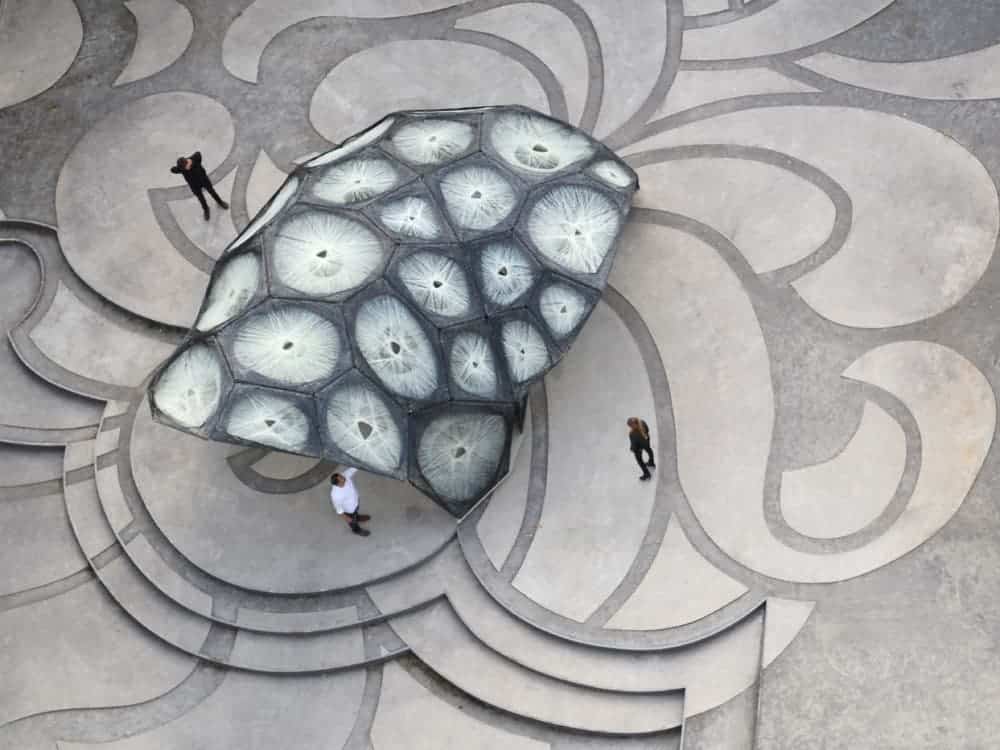
University of Stuttgart’s Institute for Computational Design (ICD) is a state of the art research facility that seeks to solve complex structural problems by mimicking nature. Every year, the institute demonstrates how natural biological constructions can be used to solve design problems by building a new research wing. The results are nothing short of breath taking. This year for instance, ICD built a structure that looks like something out of the Alien movie franchise. Who wants to move into a hive? I do.
Letting nature design your house

The challenge was to build a structure out of composite materials like glass and carbon fiber without using massive molds to dictate the shape. These sort of materials are prized because of their strength and light weight, which is why they’re often used to make Formula One cars or racing sails. To be useful , however, the materials need to be layered into a mold such that they may turn shape. This is fine for mass produced parts, but not so much when buildings are concerned as using molds would increase the time of construction and cost by orders of magnitude.

So, rather than build a mold for every component, the ICD researchers took a shortcut and went for building the components directly. To achieve this, the team took inspiration from the beetle and its elytron, a protective shield that covers the insect’s wings. The elytron is double-layered and is made out of stiff, strong fibrous material. After carefully analyzing the elytron, the researchers built an algorithm that gave them the most optimal solution for a double woven layer of fibers without the use of a core.
[ALSO READ] First 3-D printed house looks amazing! [GALLERY]
“You can lay the fibers in exactly the direction and density that is required to satisfy the structural requirements,” says Achim Menges, head of the ICD for Wired. “That’s exactly what we see in nature.”
A six-axis robot then weaved individual fibers atop of each other. At the end, the fibers amounted to a beautifully intricate web-like structure made out of 36 woven modules that’s surprisingly stable. Design and building process below:
Last year’s project involved building a peanut-shaped pavilion from 243 geometric plates made out of beech wood. Each plate is a mere 50-millimetres thick and were inspired by the skeletal system of sea urchins and the microscopic joints of sand dollars. The researchers again used computational methods to solve the complex problem and came out with the optimal shape that uses the least amount of wood. Design and building process below:
While the demonstrations are definitely awesome, the end goal is far more reaching than meets the eye. The ICD researchers hope these pilot design and fabrication processes might become introduced into the real world. The methods can be used to develop stable structures that are stronger, cheaper and easier to make than through conventional methods.


